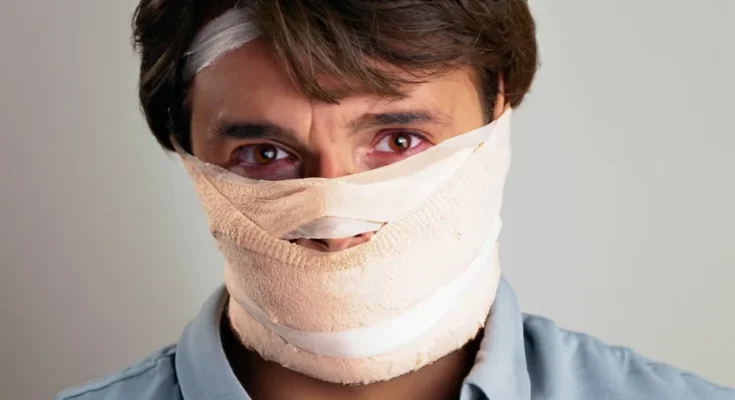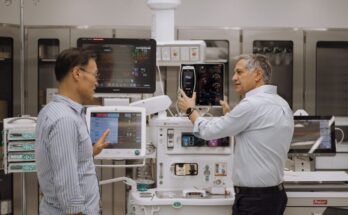The human face, a delicate and intricate structure, is susceptible to various injuries, including the traumatic condition known as a degloved face. This article delves into the intricacies of degloving injuries, exploring causes, symptoms, treatment options, and the challenging recovery process.
Introduction
In the realm of traumatic injuries, a degloved face is a term that sparks concern and urgency. This article aims to unravel the layers of this severe injury, providing insights into its causes, symptoms, treatment, and recovery.
Understanding Degloving
What is Degloving?
Degloving refers to the severe injury where the skin and underlying tissues are completely detached from the underlying structures. This traumatic incident exposes the vulnerable layers beneath, often requiring immediate medical attention.
Causes of Degloving
Traumatic Accidents
Industrial Accidents
Industrial settings pose a significant risk for degloving injuries, with machinery and equipment capable of causing severe damage. Workers in manufacturing and construction must adhere to strict safety protocols to minimize these risks.
Traffic Accidents
Road accidents, especially those involving motorcycles or bicycles, can result in degloving injuries. The high impact and abrasion on the road surface can lead to the forceful separation of the skin from facial structures.
Types of Degloving
Closed Degloving
In closed degloving, the skin is separated from the underlying tissues without an external wound. This internal trauma can still lead to complications and necessitates immediate medical attention.
Open Degloving
Open degloving involves both external and internal trauma, often caused by external forces like sharp objects or crushing injuries. The severity of open degloving demands prompt medical intervention.
Flap Degloving
Flap degloving occurs when a portion of the skin is partially torn and remains partially attached. This unique situation requires specialized surgical approaches to restore the skin’s integrity.
Symptoms and Diagnosis
Visible Signs
Identifying a degloved face involves recognizing visible signs such as extensive bruising, swelling, and the evident separation of skin layers. Prompt diagnosis is crucial for effective treatment.
Imaging and Medical Examination
Medical professionals utilize imaging techniques, such as CT scans and X-rays, to assess the extent of internal damage. A comprehensive medical examination aids in formulating an accurate treatment plan.
Treatment Options
Immediate Care
Immediate care involves stabilizing the patient, controlling bleeding, and preventing infection. The urgency of addressing a degloved face requires a coordinated effort from medical personnel.
Surgical Interventions
Surgical interventions aim to reattach the skin and underlying tissues, restoring the facial structure. Complex procedures may be necessary, often involving plastic surgeons with expertise in facial reconstruction.
Rehabilitation
The recovery journey extends beyond surgery, encompassing rehabilitation to regain functionality and appearance. Physical therapy and psychological support play vital roles in the overall rehabilitation process.
Complications
Infection Risks
The exposed tissues in a degloved face are vulnerable to infections. Vigilant monitoring and appropriate antibiotic treatments are essential to prevent complications.
Long-term Effects
Long-term effects may include scarring, altered sensation, and psychological impacts. Understanding and addressing these effects are integral aspects of the recovery process.
Recovery Process
Healing Stages
The recovery process unfolds in distinct stages, from the immediate post-injury care to long-term rehabilitation. Each stage requires tailored interventions to optimize healing and minimize complications.
Rehabilitation and Follow-up
Post-surgery, rehabilitation involves physical therapy to restore facial functions. Regular follow-up appointments with medical professionals ensure ongoing support and adjustments to the recovery plan.
Prevention
Safety Measures
Preventing degloving injuries involves implementing stringent safety measures in both industrial and daily settings. Adequate protective gear, adherence to safety protocols, and awareness campaigns contribute to injury prevention.
Support and Coping
Emotional Impact
Coping with the emotional aftermath of a degloved face is challenging. Establishing support networks, seeking professional counseling, and fostering resilience are crucial elements in navigating this emotional journey.
Conclusion
Navigating the complexities of a degloved face requires a comprehensive understanding of the injury, its treatment, and the prolonged recovery process. With a combination of prompt medical intervention, rehabilitation, and emotional support, individuals can embark on a journey towards healing and restoration.





